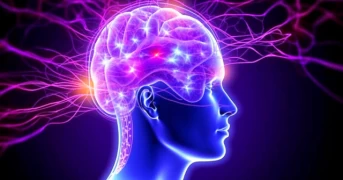
Migraine
- Migraine
- What is Migraine?
- What Causes Migraine?
- What are the Methods of Migraine Treatment?
- Medication
- Non-Drug Treatments
What is Migraine?
Migraine is a clinical syndrome that exists for many years in the patient's life, has pain attacks that can last from a few hours to several weeks, has many accompanying symptoms, and there is no headache complaint between attacks. Migraine headaches, in which genetic features can be effective in its development, can be generally defined as unilateral headache accompanied by nausea, sensitivity to light and sound.
Migraine, a disease in which genetic and environmental factors play a role, is not a purely genetic disease. There are two main subtypes, migraine with aura and migraine without aura. Migraine with aura, which constitutes 10% of migraine attacks, occurs approximately one hour before the development of headache. hallucinations that appear as zig zag lines, blurred vision, flashes of light or such as the presence of gaps in the field of view known as scotomas presents with transient sensory symptoms. During a period of 3 months, occurs for at least 15 days in 1 month. For at least 8 days per month if migraine is accompanied by headache, it is called chronic migraine.
What Causes Migraine?
Migraine is a type of headache that occurs as a result of changes in the nerves and blood vessels in the brain. Individuals with migraine have a nervous system that is sensitive to attacks and this attacks can be triggered by some factors in the external environment. When an attack is triggered, a place in the brain called the migraine generator activates. This leads to dilation of blood vessels in the brain and inflammation of nerves. Later, these cause the trigeminal nerve in the brain to be activated, which will cause pain and other symptoms during the attack, and migraine occurs.
There are many factors that can trigger migraine headaches:
- Hunger
- Meal skipping
- Stress
- Sleep disorders and disorder
- Strong light
- Menstruation period
- Height changes
- Air exchange and pollution
- Lodos
- Strong odors such as perfume
- Alcohol and cigarette consumption
What are the Methods of Migraine Treatment?
Migraine is an incurable disease. The treatment approach of physicians to migraine patients is generally aimed at preventing the frequency of symptoms and attacks. The treatment plan may vary depending on the patient's age, frequency of attacks, type of migraine, severity of symptoms, and other factors related to the person's health status.
Migraine treatment is divided into two as medicated and non-drug treatment:
Medication
Drugs applied in acute attacks aim to reduce or completely eliminate the severity of pain and other findings, shorten the duration of the attack, and increase the quality of life by aiming for effective and rapid treatment. In addition to all these, the physician aims to reduce the frequency, duration and severity of attacks and to prevent acute attacks by arranging prophylactic, that is, preventive treatment in the presence of severe accompanying symptoms. Preventive treatment is applied to some patients who have 2 or more attacks per month or 4 or more painful days a month, whose attacks become more frequent, and whose quality of life decreases due to long-term pain.
Migraine drugs prescribed by a neurologist and used in the treatment of attacks are generally as follows;
- Simple or combined analgesics,
- Nonsteroidal anti-inflammatories,
- Triptans,
- Ergot derivatives,
- Anti-emetics (anti-nausea)
- Neuroleptics (drugs that inhibit nerve activation)
The drugs used as preventive treatment are;
- Beta blockers,
- Antidepressants,
- Antiepileptics (anti-seizure medications)
- Serotonin antagonists,
- Calcium channel blockers
- Medicines such as botulinum toxin type A
Non-Drug Treatments
Migraine Botox
Migraine botox, which is one of the most up-to-date methods in the treatment of migraine disease, which greatly affects patient and public health, is one of the important options that gives extremely beneficial results even in cases of chronic migraine resistant to medical treatment. In the treatment of migraine botox, the toxin injected appropriately to the patient suppresses the secretion of a chemical neurotransmitter called acetylcholine at the muscle-nerve junction, thus causing a temporary loss of sensation in the muscle tissue in that area. In addition, botulinum toxin, which inhibits sensitivity in superficial muscle fibers, reduces pain signals sent from the surface to the center and in this way, it ensures that the sensation of pain is not felt in the affected muscles. In summary, botulinum injection applied in migraine and other chronic painful diseases indirectly blocks the pain sensitivity of the central nervous system, temporarily.
Migraine botox, which reduces the number of attacks in migraine patients, weakens the sense of pain and eliminates additional complaints such as nausea, vomiting and sensitivity to light, is an extremely useful treatment method that increases the quality of life of patients. It is applied to the bilateral area in the head and neck region. As of the 10th day after the application, the first effects begin to be seen. Although it varies according to the preferred botox preparation for injection, the effect of a single botox application usually lasts for about 12 weeks.
Migraine botox usually does not cause serious complications. Common side effects that occur after the injection can be listed as an allergic reaction at the application site, temporary hypertension in some patients, muscle weakness and stiffness, sudden onset headache and back pain. All these are mild complaints that regress spontaneously after the injection.
Greater Occipital Nerve Blockage
When drugs are not effective and headaches begin to affect daily life activities, occipital nerve blockade, which is an alternative solution for migraine treatment, emerges as an effective solution method. It is the process of blocking the part of the head that senses the pain sensation with local anesthetic agents and reducing the excitability of the nerve. With this method, the pain sensation in the nervous system that causes pain is blocked and thus the pain is relieved.
The treatment is easy to administer, and a local anesthetic is injected with a very thin needle into the greater occipital nerve area at the back of the head while the patient is in a sitting position. In this treatment, which is a local method, there is no problem other than numbness in the neck that lasts for 4-5 hours, but rarely dizziness or neck pain may develop. It is generally a safe local treatment with no systemic side effects. The time required to see the result is about five minutes.
Drugs used in migraine prophylaxis treatment reduce pain frequency, severity and duration by 40-70%. In this case, the drug should be used for at least 6 months. An average of 50-70% reduction is achieved in occipital nerve blockade, but after 1-3 applications without medication, treatment is beneficial. It can be safely applied to pregnant and lactating mothers.





